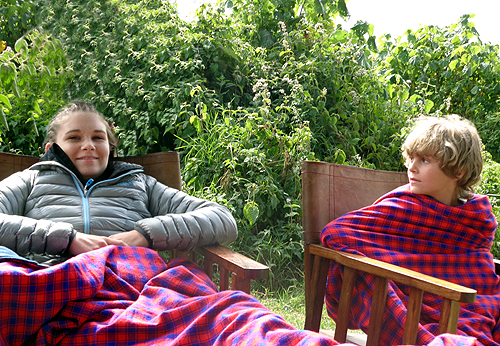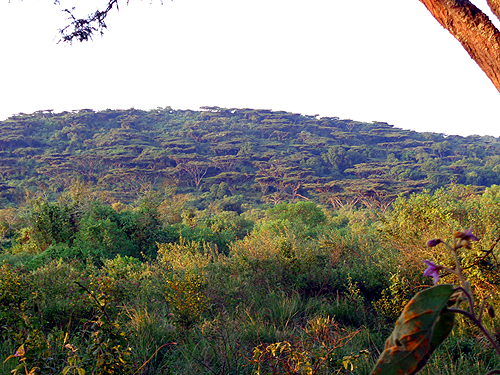Like everywhere, Ngorongoro lions are struggling. The 9-11 prides of 100-110 lion have probably shrunk to two-thirds to three-quarters that.
That’s my anecdotal guess and I’m not sure anyone’s done a real count recently. But as we game drove down the Sopa side road from our exclusive camp at Lemala, we immediately encountered a female from the Big Tree pride who was really beaten up.
She had blood on her face and haunches, and often that means nothing more than that she was just at the kill. But the right side of her face was horribly scratched and that meant much more, and her belly wasn’t very full. When she walked she limped.
That was our first lion in the crater. We’d see another 14 before the day was over, including the magnificently maned lion of the Muinge River pride.
All that we saw looked fabulously healthy, with big bellies suggesting we’d arrived one day late to see some action. In fact, one of the Big Tree males lumbered across in front of us into the veld and took our viewing right with him to an earlier kill, as he scattered the hyaena and jackal.
But something was wrong, or perhaps better said, different than before. Traditionally there are many, many more females than males, because of the male’s violent competition with one another and the fact that they’re often kicked out of the pride before they know how to hunt.
But during our Kisiel Family Safari, and consistent with what I’ve been slowly seeing over the last few years, the ratio of males to females is increasing.
Males are 50% bigger and stronger than females, so the obvious conclusion is that something is stressing the environment and the bigger and stronger are out surviving the weaker. Is this somehow related to global warming, or is it as some researchers have suggested more mankind meanness.
There have been more and more documented cases of lion poisoning at the fringes of national parks as the peripheral human populations increase and develop. But while that might explain East African declines, it doesn’t well explain southern African declines where human populations have achieved a more or less balance with the remaining wilderness years ago.
Other researchers like Craig Packard have documented a disease carried by buffalo that weakens the buffalo but doesn’t kill it. But when lions hunt the weakened buffalo and then eat the diseased meat, they die.
We talked a lot about this during our game drives in the crater, because lions really dominated the game viewing. This is pretty natural in the dry season, but even so, I think we had an unusual number of sightings and events.
The crater was cold! My little thermometer said the temperature just outside our tents on the down road from Sopa reached 46F for a low and never got above 60F. In part this was because it was so overcast. Down on the crater floor the sun broke through often and it was much warmer, probably ten degrees warmer.
Despite the cold, though, my family loved their exclusive Lemala camp. Every spacious tent had a propane heater, we had hot water on demand for showers and shaving, and a lovely hot water bottle was stuck into everyone’s wonderful beds!
Maasai blankets were everywhere, and everyone used them!
The dry season in the crater begins this way, with very cold temperatures, the coldest of the year. But with sufficient hot chocolate personally delivered to their tent each morning, 8-year old Nick and 11-year old Camden couldn’t have been more pleased!
“It can’t get better than this!” Grandpa Mark exclaimed.

